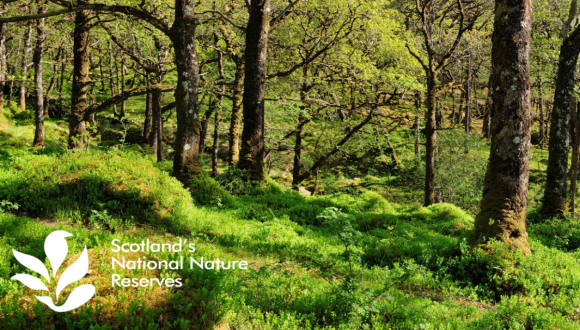
Scotland's Rainforest
Discover more about one of our most precious habitats.
Scotland’s rainforest is as important as tropical rainforest, but even rarer. It’s a kind of coastal temperate rainforest, which itself is incredibly rare on a global level.
Scotland’s rainforest, also known as Atlantic woodland and Celtic rainforest, is made up of the native woodlands found on our west coast in the so-called “hyper-oceanic zone”.
Here, high levels of rainfall and relatively mild, year-round temperatures provide just the right conditions for some of the world’s rarest bryophytes and lichens.
It’s the diversity of these bryophytes and lichens that are found in vast quantities on trees, boulders, in ravines and on the ground, that makes Scotland’s rainforest internationally important. We have some of the best remaining rainforest sites in Europe. Find out more about some of these important habitats and where to experience them.
Alliance for Scotland's Rainforest
Some estimates suggest that as little as 30,000 hectares might remain of Scotland's rainforest. Only a fraction of land on Scotland's west coast that has conditions ideal for rainforest, actually hosts it.
The remnant oak, birch, ash, native pine and hazel woodlands are small, fragmented and isolated from each other. Almost all show little or no regeneration due to high levels of grazing; almost half are being choked with Rhododendron ponticum and a fifth have been planted up with exotic conifer plantations. They also face threats from diseases like ash dieback; as well as nitrogen pollution, infrastructure development and climate change.
NatureScot is a partner in the Alliance for Scotland’s Rainforest, a voluntary partnership of more than 25 organisations with a shared interest in ‘Saving Scotland’s Rainforest’. Our vision is to see Scotland’s rainforest thrive once again. In May 2019 the Alliance launched ‘The State of Scotland’s Rainforest' – a report that outlines the danger this habitat is in and what we need to do to save it.
Where to see Scotland's rainforest
There’s no better way to discover the rainforest than by visiting, and some of our finest sites are also National Nature Reserves (NNRs).
Find out more
Planning and development: trees and woodland




